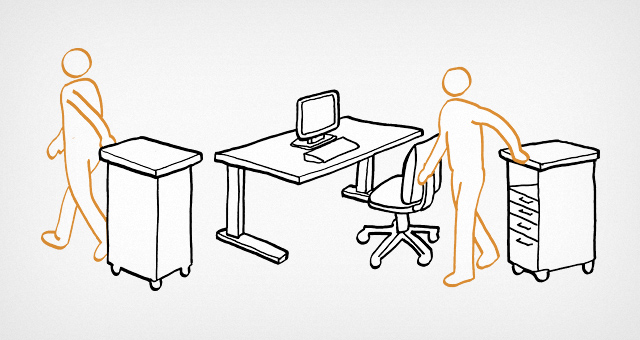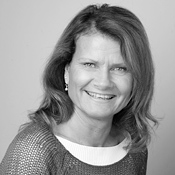
Going from mine to ours
Since the beginning of November, all Coor’s head office staff start their day by a locker instead of at their own workstations. Coor’s new head office in Kista, north of Stockholm, fully supports activity-based working. Flexible workspaces mean a major realignment that takes courage, honesty and dialogue.
Coor introduced Concept Office back in 2009 at part of its former head office at Solna, Stockholm, a process led by project manager Carina Hörnfelt Bylund. Coor is now taking this step fully, introducing activity-based working for all staff. Carina was also heading up the 'Furnishing and Change' sub-project at the new head office.
"Because I helped introduce 'Concept Office,' participating in the work on developing our concept into a new head office was natural. The fact that I understood what the change means was a big advantage in my work on preparing colleagues for what was coming up," commented Carina.
Carina was also very active in the initial analysis phase, measuring occupancy and interviewing managers and staff, to try to understand how the new office would be designed to match people's needs and working methods.
"First and foremost, we lacked a range of meeting spaces. Our former office didn't promote collaboration and exchange of best practice. We could also see that viewed over a week, the number of office workspaces was clearly over-dimensioned, with spaces often unoccupied."
From these results, Carina them planned office space where nearly 250 people are mainly stationed in close consultation with an external interior designer. There are also a number of visiting colleagues and external visitors. There are a total of over 360 potential workspaces for these people, 179 of which are desk spaces. The rest are facilities to enable working in sound-absorbent armchairs, three-piece suites, team tables (with different seating heights) and touchdown spaces. There are also conference rooms and meeting spaces in a range of sizes for different purposes.
"Currently, we're doing about 50% of our daily work individually and 50% with other people. We also try to find solutions for work that requires a lot of concentration and what needs less concentration, both individually and in collaboration. We need workspaces for all types of need and collaboration."
Collaboration and meeting culture figure strongly when Carina talks. Creating different workspaces for various types of interaction were central when designing the new office, and for this to work, there has to be interplay between equipment, technology and behavior.
Generally, it’s fair to say that at present, we do about 50 % of our daily work individually and 50 % with other people.
“Where previously we only offered office workspaces, a cafe and traditional conference rooms, the new office brings us completely new possibilities. I feel secure in the way we’ve designed the office, the challenge lies in working to change our meeting behavior. This isn’t just a new office—we get new meeting spaces.”
Carina was active preparing her colleagues for the changed working methods and new meeting culture since the spring.
“The key to success is in informing people, dialogue and participation. We’ve disseminated information on how the new office would look and work in a dedicated relocation room on our service portal, where all the information was uploaded. We also had a little exhibition in the common cafe lounge since August, including premises layout, images and swatches, and where we also installed a workstation. We’ve also held a few breakfast meetings with various topics and focuses.”
Information on how working methods will change has been produced in smaller teams and with managers. Involving managers is decisive to all change work.
To create participation, everyone’s worked together with the collective rules of conduct to apply in the new office. These might be small, but still important, things such as whether it’s acceptable to talk on the phone in open workspaces, or if you can eat hot food at your desk.
“You have to be clear about the rules of the game in any open plan office. You can’t forget that my workspace is also my colleague’s. Because Coor has used open plan offices for some time, I think a lot of this is self-evident for many of us, but could be a problem if you’re used to working in office cubicles.”
The relocation team was open to questions from staff throughout the journey, either through their managers or a dedicated question-and-answer box.
“We saw a few questions a week, so we knew what people were thinking about, which we tried to factor in when we planned our major meetings,” continues Carina.
Despite people being prepared as well as possible, Carina thinks it will take some time before everyone is used to the new working methods.
“My experience is it takes up to a year before old habits die out. It’s important to keep listening to people after you relocate, and keep holding regular meetings to follow up how the office is being used, discuss problems and keep developing the concept. All change projects have to go through the different phases of the change curve, but by capturing and addressing reactions and concerns, you can shorten the curve and smooth out the troughs for as many people as possible.”
Want to know more about how you prepare your people for a change? Please contact Carina Hörnfeldt-Bylund, Coor’s Project Manager on, +46 (0)8 553 95740, Hörnfeldt-Bylund, Carina.
More articles on Concept Office

